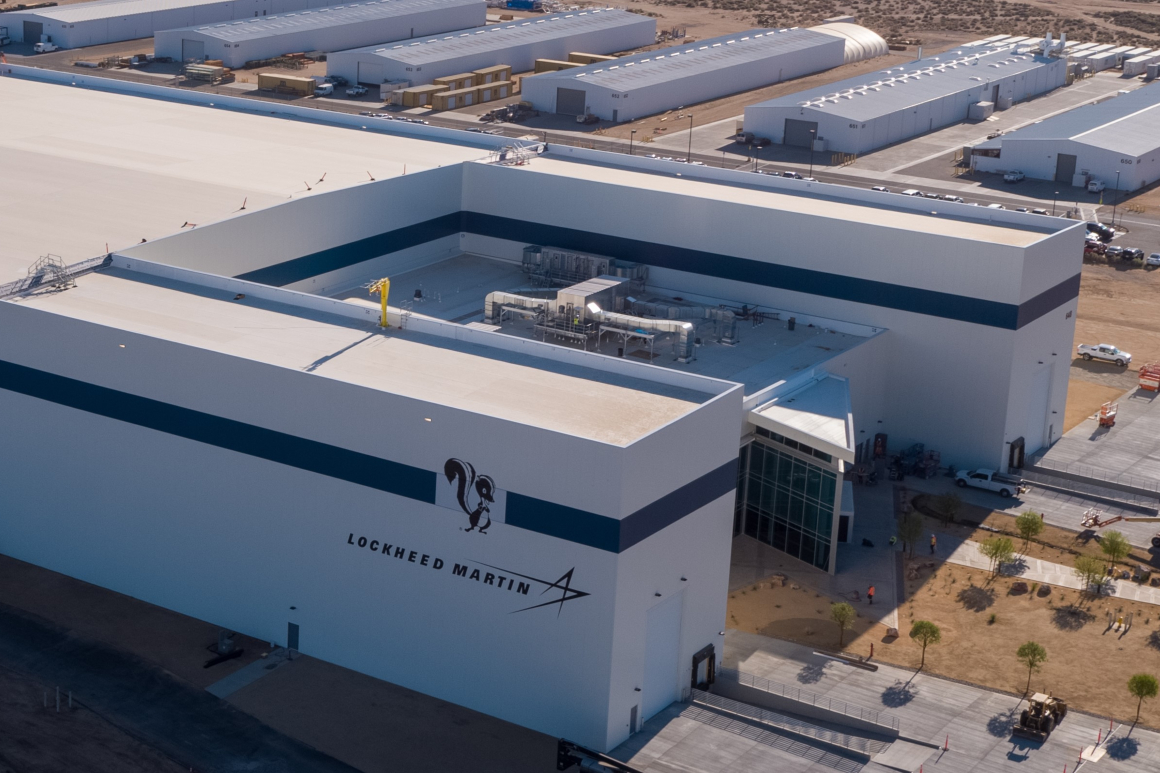 An artist rendering of a next-generation drone demonstrates an unmanned aircraft teaming with an F-35.| Courtesy of Lockheed Martin Skunks’ Den Skunk Works has been a legend since its birth in 1943 after the Army’s Air Tactical Service Command asked Lockheed Aircraft Corporation to design and manufacture the nation’s first fighter jet in the midst of World War II.
An artist rendering of a next-generation drone demonstrates an unmanned aircraft teaming with an F-35.| Courtesy of Lockheed Martin Skunks’ Den Skunk Works has been a legend since its birth in 1943 after the Army’s Air Tactical Service Command asked Lockheed Aircraft Corporation to design and manufacture the nation’s first fighter jet in the midst of World War II.
Lockheed selected Clarence “Kelly” Johnson, a young engineer, to lead the XP-80 program.But there was one problem: The company did not have room at its facility in Burbank for the project.
So Kelly’s team rented a circus tent to work on the project and delivered the fighter in just 143 days.According to lore, the tent had a pungent smell because it was sitting adjacent to a plastics factory in Burbank.
The name Skunk Works was born.
Nearly 80 years later, it’s a lot more high-tech than high-top.Skunk Works has just completed a 215,000-square-foot advanced manufacturing facility that can crank out aircraft for the U.S.and its allies as they look to future conflicts.
The new facility makes up a small portion of Skunk Works’ footprint in the desert.Sitting on a table-flat square of land surrounded by sun-bleached highways, where the temperature soared to 105 degrees during the visit, Skunk Works is actually a collection of 58 buildings spread out over 2.4 million square feet.
After arriving at the visitor’s center, guests are escorted — sometimes by van, often through underground tunnels, always under close watch — throughout the campus to avoid seeing too much.
Roughly 85 percent of the work done here is classified.
The Skunks’ Den is the only unclassified room at headquarters.The modern space looks like any ordinary conference room.There’s a large conference table and extra seating.But this is also stuffed with some 60 toaster-sized models on display stands lining the walls encased in glass.
One of the glass cases features an unassuming briefcase.It’s the one Johnson used when visiting CIA headquarters to show an early model of what became the A-12, a predecessor of the SR-71.
Yet despite all the achievements on display, Lockheed has seen its share of problems and criticism in recent years.Lawmakers continue to raise alarms about costs and performance associated with the tri-service F-35, an aircraft born in Skunk Works that became the most expensive program in the Pentagon’s history.
And despite increases in revenue, the vast majority stemming from U.S.
government contracts, Lockheed’s stock performance has struggled to regain footing since the start of the pandemic in March 2020.
More recently, longtime company-man and acting Chief Financial Officer Kenneth Possenriede abruptly retired in August citing personal reasons, and his announcement coincided with Lockheed Martin’s disclosure of a $225 million loss on a classified aeronautics program.
Callan speculated in a note to investors that although the loss was “not large,” it may have still led to Possenriede’s resignation if he or his team missed warnings of the project’s troubles.
Lockheed Martin said the $225 million loss stemming from performance was identified when the company conducted a deep dive on the program and then reported the results to the board.
“At the conclusion of the review and based on the current negotiations with our customer, it was determined that the total costs to complete the current phase of the program are expected to exceed the contract price,” according to Lockheed’s quarterly filings.
Because of the classified nature of the undisclosed program, it’s likely the project has ties to Skunk Works, but company executives did not comment on the loss during the visit.
An artist rendering of a next-generation unmanned aircraft Skunk Works is pitching to the Pentagon.
| Courtesy of Lockheed Martin
Factory of the future Back in the Skunks’ Den, Jeff Babione, Skunk Works vice president and general manager, lays out what he calls the “factory of the future.”
The new factory is Skunk Works’ first since the 1980s.Instead of being designed to assemble a specific aircraft, the building has no fixed machines or tooling, which means it can be easily reconfigured to host new projects, Babione said.
It’s also the first Skunk Works facility to host secure classified wireless communications, which means employees can digitally transmit information.Previously, everything was done manually on paper.Over the next five years, Lockheed Martin will invest over $2 billion on digital transformation.
Local dignitaries joined Lockheed Martin executives for a ribbon-cutting ceremony here.Due to the rise of the Delta variant, attendees still had to physically distance themselves and wear masks.
Guests entered a lobby before walking into the new factory while Dua Lipa’s “Levitating” pulsed through the sound system.
The lobby’s left wall held a plaque honoring Michele Evans, former head of Lockheed Martin Aeronautics, who died of cancer on Jan.1.Leaving the lobby and entering the factory under the bright lights, a new car smell lingers as guests mill about various stations with drawings depicting how the space is designed with a fluid future in mind.
Digital engineering is the big new trend in weapons development.The move sets up Skunk Works to create aircraft at a low price by owning a project from birth into adulthood, Babione said.
The new factory comes as the U.S.
faces increasing competition from China.
Lockheed — like other companies — must rethink how it does business to remain relevant as Beijing continues to develop advanced capabilities, such as hypersonic weapons and fifth generation aircraft, supporting its position as a regional power.
Walking through an underground tunnel to one of the dozens of buildings on campus, guests surface in another facility.This is where NASA’s X-59 supersonic flight demonstrator is being assembled .It’s one of the few unclassified programs at Skunk Works.
On a normal day it would be buried under a swarm of workers, but today, the shell of the aircraft’s fuselage sits quietly behind a chain-link fence.A steel, ceiling-height wall runs the length of the factory floor, blocking out other top-secret aircraft being birthed on the other side.
The X-59, a supersonic transport jet, is designed to reduce the noise signature of sonic booms over land, notes Atherton Carty, vice president of strategy and business development.“It’ll sound like a car door closing,” Carty said.
Because of noise regulations, the Concorde was only permitted to reach supersonic speed over the ocean, which ultimately tanked its viability in the consumer travel space.
Skunk Works is reusing pieces of previous projects to build the 100-foot long, 30-foot-wide X-59.For example, the program is using the T-38 canopy, F-16 landing gear, and F/A-18 engine, which will lower cost, Atherton said.Lockheed Martin won the $247.5 million contract in 2018 from NASA.
In September 2020, Skunk Works disclosed another subproject, Speed Racer.For the first time, a program will go from initial concept to flight test to certification using digital engineering.The flight vehicle configuration appears to be a winged air-launched cruise missile or unmanned aircraft system.
Skunk Works, meanwhile, is also making big bets on hypersonic weapons development, such as the AGM-183 Air-Launched Rapid Response Weapon that failed a flight test in July .
And it’s also chasing the Next Generation Air Dominance program for the Air Force and Navy to replace F/A-18s and F-22s.
While the visit here made clear that public updates on these programs won’t be coming soon, the peek behind the curtain shows what may be possible.
“We’ve come a long since a circus tent in World War II,” Babione said.“For many of you, this may be the last time you’re in this facility.”
Filed Under: NASA , Lockheed Martin POLITICO Politico Logo
Link Copied.
